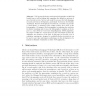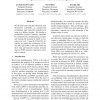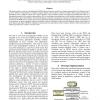221 search results - page 18 / 45 » Word Sense Disambiguation Using Pairwise Alignment |
CICLING
2003
Springer
14 years 1 months ago
2003
Springer
NLPsystem developers and corpus lexicographers would both bene t from a tool for nding and organizing the distinctive patterns of use of words in texts. Such a tool would be an ass...
ECAI
2000
Springer
14 years 25 days ago
2000
Springer
Abstract. This paper describes an experimental comparison between two standard supervised learning methods, namely Naive Bayes and Exemplar–basedclassification, on the Word Sens...
EMNLP
2007
13 years 10 months ago
2007
We develop latent Dirichlet allocation with WORDNET (LDAWN), an unsupervised probabilistic topic model that includes word sense as a hidden variable. We develop a probabilistic po...
LREC
2010
13 years 10 months ago
2010
This paper presents a word sense disambiguation (WSD) approach based on syntactic and logical representations. The objective here is to run a number of experiments to compare stan...
TSD
2001
Springer
14 years 27 days ago
2001
Springer
Two kinds of systems have been defined during the long history of WSD: principled systems that define which knowledge types are useful for WSD, and robust systems that use the info...



